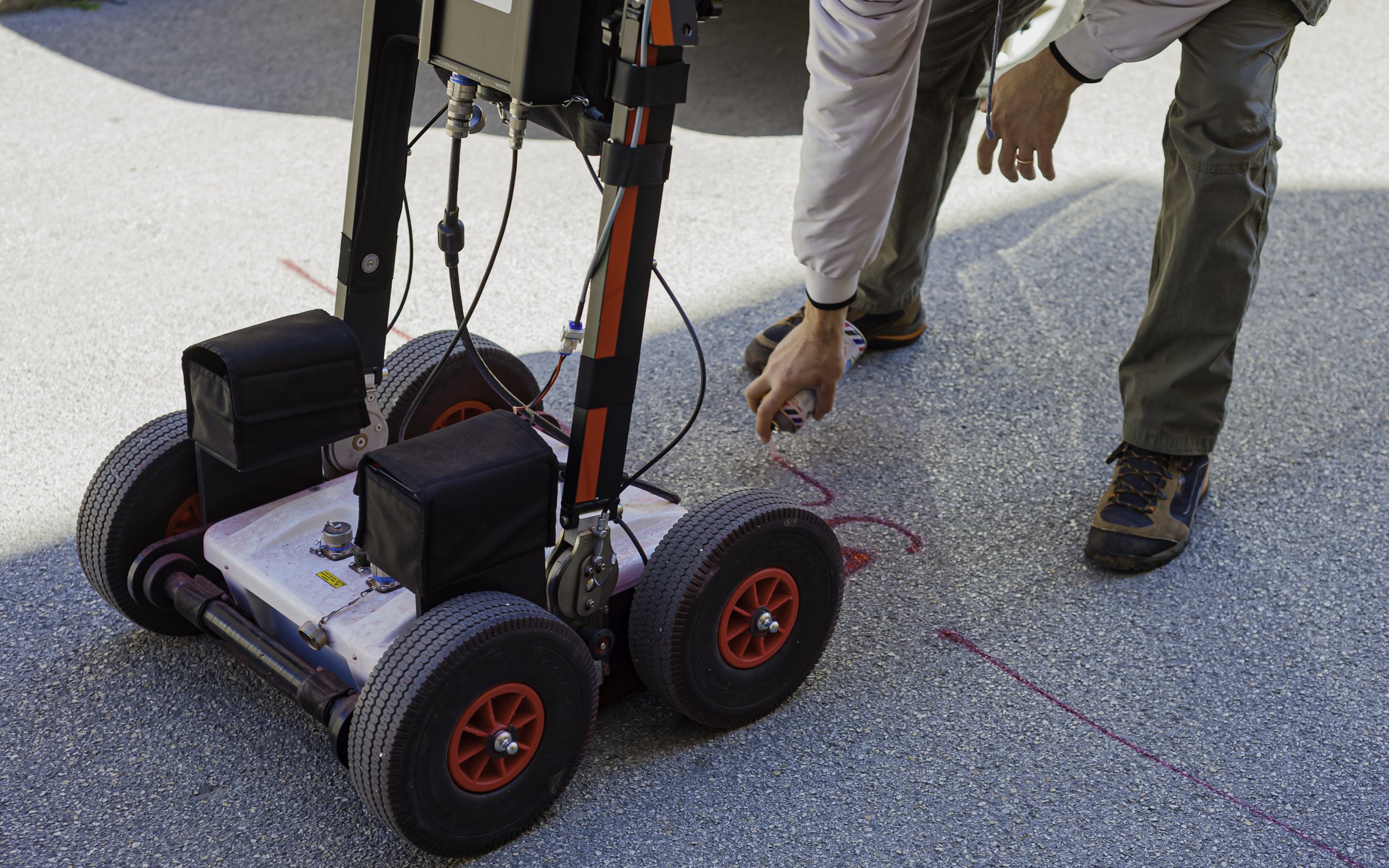
Mark-Outs
Our senior locators at Locator Worx utilise Ground Penetrating Radar (GPR) for our mark-outs onsite. GPR is invaluable for locating and mapping the depth of various utilities, including water, gas, electric, communication lines, sanitary and storm sewers, as well as unknown and abandoned pipes. It is also efficient in identifying underground storage tanks and conducting pre-studies for horizontal directional drilling (HDD).
The capability to identify and mark-out buried assets within concrete or soil, provides a more cost-effective and time-efficient solution for achieving desired results.
Tasks that were once time-consuming, expensive, or impractical can now be completed swiftly and efficiently using GPR technology. This non-invasive approach leads to substantial savings in construction, engineering, and maintenance projects worldwide.
GPR Applications include:
Concrete Investigation: GPR is ideal for mapping the depth of rebars and other installations within concrete. It can accurately measure the thickness of concrete slabs and elements, detect voids, and map fractures within the concrete.
Roads and Railways: GPR is extensively used for mapping road and asphalt layers, conducting railroad ballast surveys, and investigating the internal structure of roads and railways. It is also suitable for geological investigations prior to construction and commonly used for bridge deck surveys and airport runway investigations.
Archaeology: GPR is frequently employed to map archaeological landscapes, sites, features, and objects.
Geology: GPR facilitates stratigraphic mapping, structural analysis, cavity and sinkhole detection, depth to bedrock investigations, bedrock fracture mapping, and the identification of mining hazards.
Water: GPR is effective in mapping lakes and rivers, conducting bathymetric investigations, and examining the structures of river and lake floors. It also aids in geological investigations for groundwater detection.
Earth and Concrete Dams: GPR can analyze the internal structure and layers of dams, as well as detect voids within them.
Tunnels and Mining: GPR is used for detecting fractures, performing structural investigations, and evaluating concrete thickness in tunnels and mining environments.
Military: GPR is utilized for detecting unexploded ordnance (UXO), analyzing runway integrity, and clearing trenching routes.
Ice and Snow: GPR is an excellent tool for analyzing the structure of ice and snow, estimating their thickness, and detecting crevasses.

